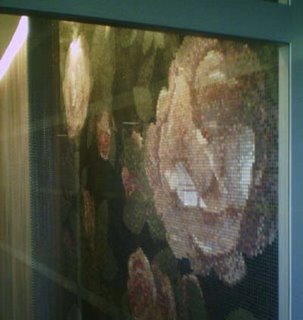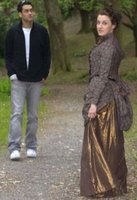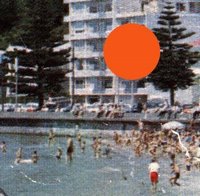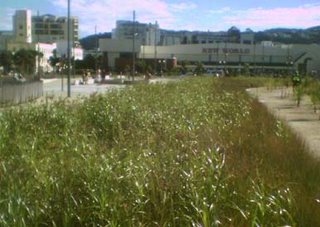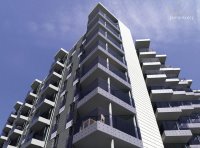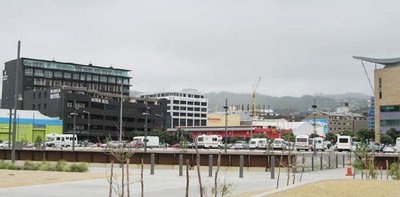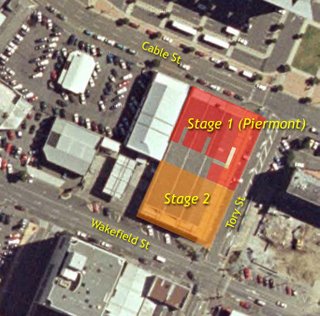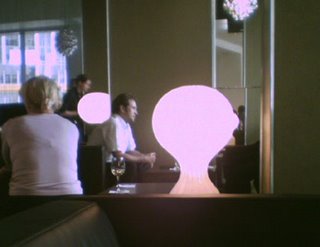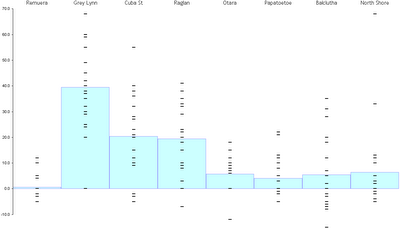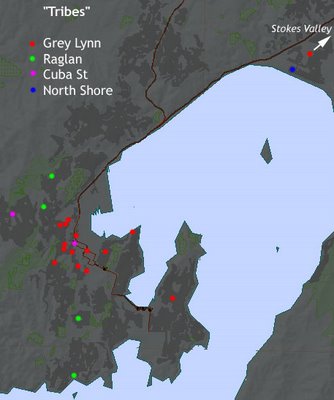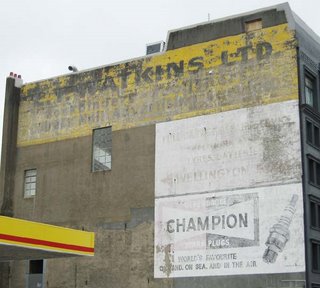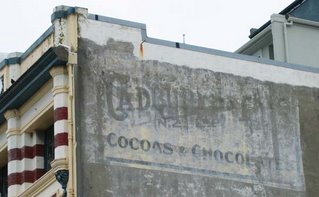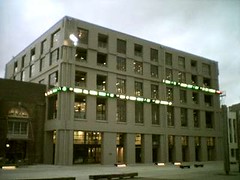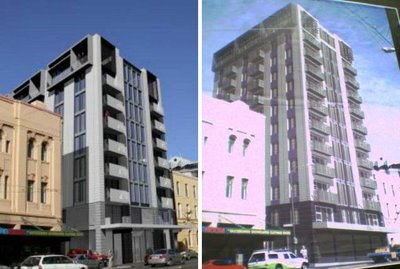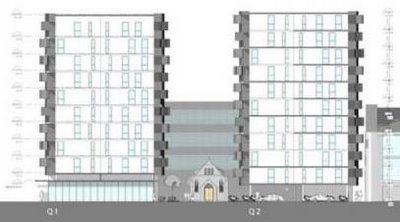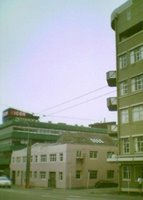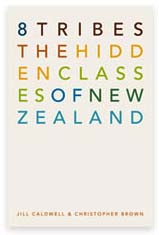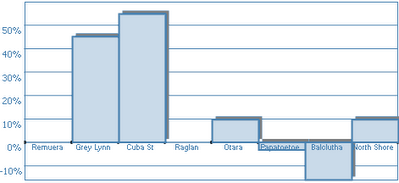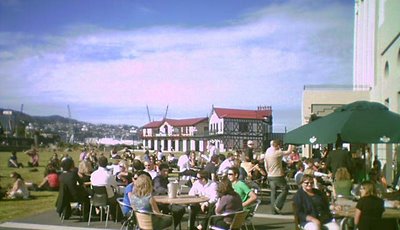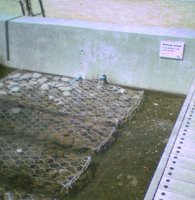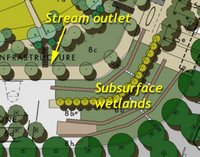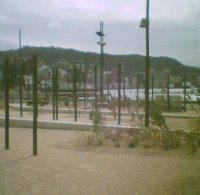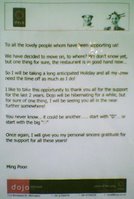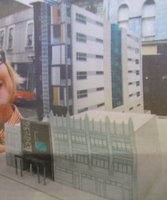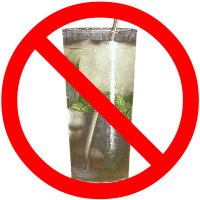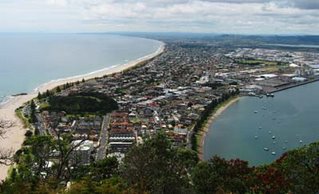
This time last year I wrote a kind of "
what I did on my hols" about Christchurch, and I'll start this year off with a similar post on
Tauranga and
Mt Maunganui. Those of you who know me, and who know the western Bay of Plenty, will realise that it's not exactly my kind of place, but I put my preconceptions aside as much as possible in order to learn from the contrasts between it and Wellington.
I know I was supposed to be enjoying the beach, but of course the first thing I wanted to do was see the city. Which raised the question: where
is the city, exactly? Part of the problem is due to the urban form of the Tauranga district, which consists of a seemingly unplanned patchwork of subdivisions, motorways, industrial areas and malls. All that sprawl has assimilated older town and village centres, making it hard to envision what is undeniably a continuous urban area as a "city". Auckland is very similar in that regard, but at least if you gathered together all of Auckland's scattered hubs into one place you'd get a good-sized urban centre. Mentally conglomerating all of Tauranga and Mt Maunganui's non-residential areas didn't quite seem to provide the urban fabric one would expect from NZ's
sixth-largest and reputedly fastest-growing urban area.
Don't get me wrong: there are parts of the region that seem to be perfectly pleasant little town centres. Downtown Tauranga has some nice pedestrianised shopping areas, with a few interesting shops and restaurants hidden among the chains, but it still feels like a much smaller provinical town. Mt Maunganui's shopping strip is a lot better than an enclosed mall, and while dining outside tended to be ruined by the continuous throb of boy racers taking the automotive equivalent of
la passeggiata, at least there is a true public realm. There's another cluster of shops and cafés under the towers by Mauao itself, but it's clearly still a beach resort rather than an urban place. Where is the actual CBD?
It turns out there isn't one. Wikipedia
states that "Although the population has increased dramatically, the city is proportionally underrepresented in businesses, and the CBD reflects a city of less than half the population as that of Tauranga". Why? How does the city support itself?
My first thought was based on Tauranga's reputation as a Grey Power stronghold: maybe it really does have very few workers, since the place is one big retirement home. But the
latest census stats don't quite bear that out. While the proportion of people not in the workforce (35%) is slightly higher than the national average of 30% (and much higher than Wellington's 24%), it's not enough to explain the difference. I had expected Tauranga's demographics to be similar to Kapiti's, so I repeated
the analysis that I did for the Wellington region, and compared Tauranga to Wellington City, Kapiti and the national average:
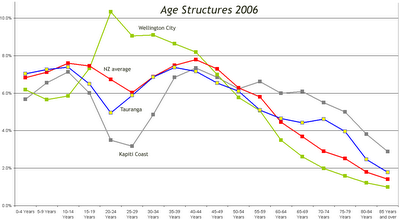
There's definitely something in the comparison, with more over-65s than average, and fewer 15-24 year-olds (though that's not the case at the Mount over summer!). But the 25-40 age bracket is bang on the national average, and much higher than for Kapiti. If there's no CBD, then where are they working?
Of course, the answer is obvious to anyone not as blinkeredly white-collar as me. The
Port of Tauranga is the largest export port in the country, responsible for 27% of NZ's exports by sea. That, combined with tourism (over 11% of workers are in sales - the highest in the country), speculative real-estate riches and the tradespeople required to build all those McMansions and flyovers, has been enough to quadruple the population in 30 years.
I shouldn't belittle the importance of those industries: if it wasn't for all those logs and kiwifruit going through Tauranga harbour, none of the rest of us would have jobs. But I can't help being a little perturbed by what it says about New Zealand and its future. The western Bay of Plenty has a lot of people shipping stuff, building stuff and selling stuff, but where are all the people thinking of new stuff to sell and how to make it? They could all be in Auckland and Wellington, coming up with ideas that the practical people in the provinces put into action, but somehow I doubt it. We still seem to be stuck with selling low-value bulk produce, exporting logs rather than high-design furniture, and that's not a recipe for increased productivity and international competitiveness. It could be that Tauranga is a shining success story, an economy that has boomed on the back of natural advantages and down-to-earth entrepeneurship, but I think it's far from a sustainable model for the rest of New Zealand to follow.
All of which comes back to my original quest: where is the city? To put it bluntly, there isn't one. Tauranga is a combination of provincial service centre, industrial port, retirement village and beach resort, but it's not a city. That may seem a bit harsh or narrow-minded, but I believe that a city has to be more than just a big town. According to a
quote from Margaret Mead, the vital thing about a city is that:
... any day in any year, there may be a fresh encounter with a new talent, a keen mind or a gifted specialist - this is essential to the life of a country. To play this role in our lives a city must have a soul - a university, a great art or music school, a cathedral or a great mosque or temple, a great laboratory or scientific center, as well as the libraries and museums and galleries that bring past and present together. A city must be a place where groups of women and men are seeking and developing the highest things they know.
With all due respect to the
University of Waikato at Tauranga, I don't think the Tauranga conurbation has any of that. Without an intellectual heart, not only does a would-be city lack the urban bohemia that could give it grit, vigour and self-awareness, it lacks a vital spark of innovation and imagination. Residential density is not enough, as the faux-Queensland condos of the Mount demonstrate: you end up with all the worst aspects of poorly-designed density (lack of views, sun, visual and acoustic privacy) without the benefits of urbanity (vitality, walkability and convenient public transport). Nor is mixed use, at least not when that mixture is limited to residence and retail. And it's definitely not enough just to concentrate on the nuts and bolts of civic infrastructure, despite all the outraged ratepayers of Tauranga complaining about paying for such frivolities as an art gallery.
Tauranga may not be a lost cause: after all, Wellington was once dependent upon whaling and flax for survival. But it suggests to me that a true "city" is not like a town, only bigger: it is something qualitatively different, something that generates a life of its own beyond a reliance upon land and leisure. Urban design and Smart Growth principles are all very well, but without an urban vision and attitude, an "urban area" can never be a real city.
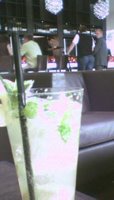 Now that January is at an end, it's time to sum up the results of my mojito-sipping month. The weather was relatively kind to my quest, and if it wasn't quite as sunny as we would have hoped for, the humidity often demanded something long, cold and refreshing. Most of the bartenders were either too polite to turn up their noses at my request, or didn't realise that it's a deeply unfashionable drink.
Now that January is at an end, it's time to sum up the results of my mojito-sipping month. The weather was relatively kind to my quest, and if it wasn't quite as sunny as we would have hoped for, the humidity often demanded something long, cold and refreshing. Most of the bartenders were either too polite to turn up their noses at my request, or didn't realise that it's a deeply unfashionable drink. Harem and Vintage both departed from tradition by serving them in a short glass, which seems to miss the point of a mojito. Vintage's one still tasted delicious, but Harem's version had very little ice, just a token mint leaf and a single slice of lime. On the other hand, it came garnished with an orange plastic elephant perched on the side of the glass, and that's got to count for something! Restaurant 88 made it way too sweet, using what seems to have been lime cordial rather than fresh limes, and while Havana used real lime juice, the fact that it was squeezed out of a bottle detracted from the experience somewhat. I guess they've had to streamline their technique to deal with high volumes.
Harem and Vintage both departed from tradition by serving them in a short glass, which seems to miss the point of a mojito. Vintage's one still tasted delicious, but Harem's version had very little ice, just a token mint leaf and a single slice of lime. On the other hand, it came garnished with an orange plastic elephant perched on the side of the glass, and that's got to count for something! Restaurant 88 made it way too sweet, using what seems to have been lime cordial rather than fresh limes, and while Havana used real lime juice, the fact that it was squeezed out of a bottle detracted from the experience somewhat. I guess they've had to streamline their technique to deal with high volumes.

